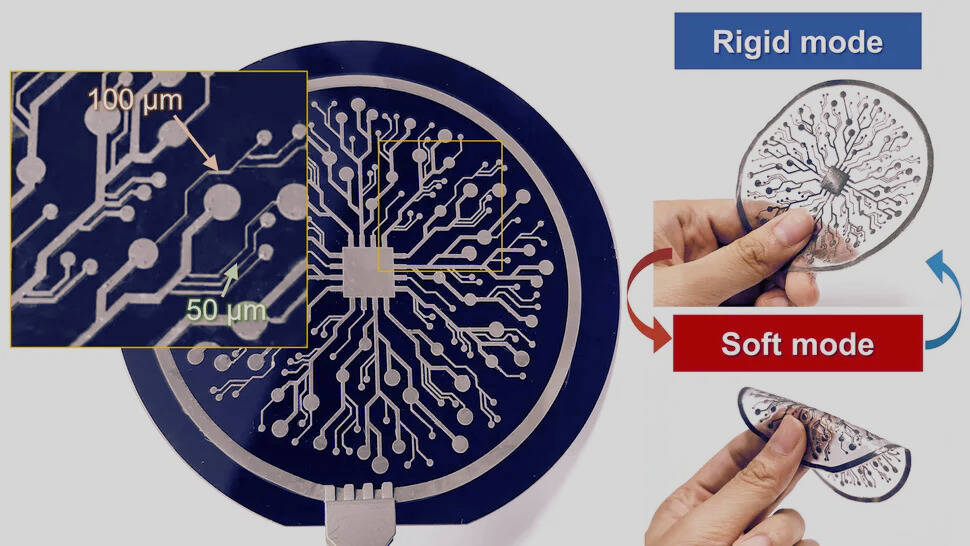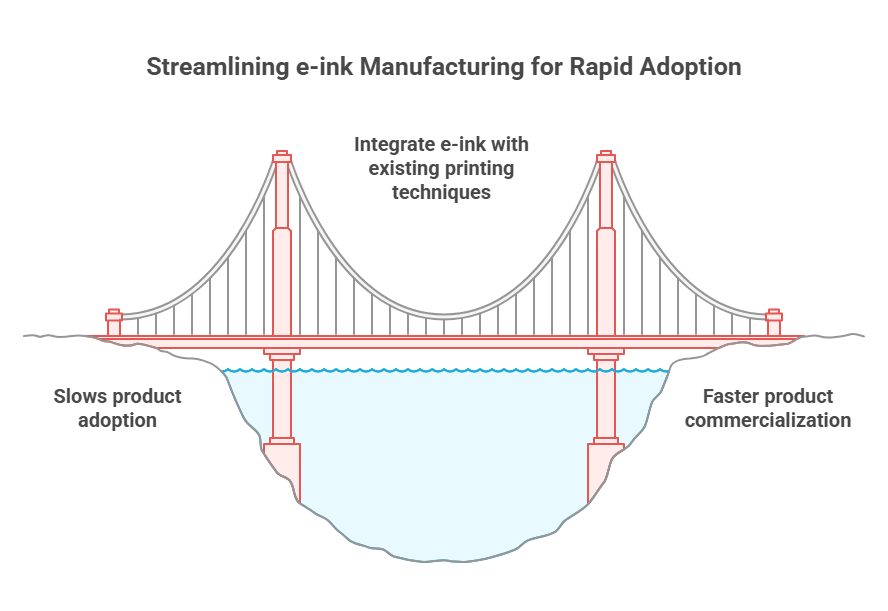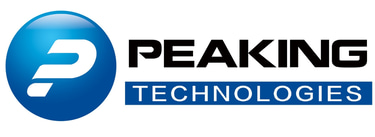The Dawn of Adaptive Electronics: A Deep Dive into Shape-Shifting Electronic Ink
Dive deep into the future of flexible electronics with shape-shifting electronic ink. Explore its gallium-polymer mechanics, applications in wearables & medical tech, and manufacturing potential. Essential insights for innovators in electronics.
JoeZ
6/29/20258 min read


The electronics industry stands on the precipice of a transformative era, moving beyond the rigid constraints that have long defined our devices. For too long, designers and engineers have grappled with a fundamental dichotomy: robust, high-performing electronics that are inherently stiff, or flexible, conformable circuits that often compromise on durability or ease of integration. This trade-off has limited innovation in critical sectors, from advanced medical devices to next-generation wearable technology and sophisticated robotics.
However, a groundbreaking development in material science promises to shatter this paradigm: the invention of a "shape-shifting electronic ink." This revolutionary material, capable of dynamically transitioning between rigid and soft states upon gentle heating, represents not just an incremental improvement but a fundamental shift in how we conceive, design, and manufacture electronic systems. For electronics developers and strategic decision-makers, understanding the intricacies, implications, and potential applications of this adaptive electronic ink is paramount to shaping the future of the industry.
Unpacking the Innovation: How the Electronic Ink Works
At its core, this electronic ink is an intelligent composite material engineered for programmable stiffness. Its ingenious design hinges on the synergistic interaction of two primary components:
Gallium: A fascinating metal with an unusually low melting point, just below average human body temperature (around 29.8 °C or 85.6 °F). In its solid state, gallium is rigid and conductive. When heated slightly, it transitions to a liquid state, losing its structural rigidity but retaining its electrical conductivity.
Polymer-based solvent: This acts as the matrix for the gallium particles and plays a crucial role in the ink's state-shifting properties. The specific nature of this polymer allows it to undergo a structural change or "break down" in a controlled manner when gently heated. This breakdown facilitates the change in the overall mechanical properties of the composite.
The magic happens in their combination. When the ink is at room temperature, the gallium is solid, imparting rigidity to the overall structure. The polymer matrix, in this state, holds everything together, creating a stable, firm electronic component. When this composite is subjected to a gentle rise in temperature—for instance, through body heat or a low-power heater—the gallium within the ink melts. Simultaneously, the polymer-based solvent also responds to this gentle thermal input, facilitating the softening process.
Crucially, this transition doesn't compromise the electrical functionality. The material remains electrically conductive whether the gallium is in its solid or liquid state. This dual capability—variable stiffness coupled with consistent conductivity—is what unlocks unprecedented design freedom. It means a device can be precisely fabricated and positioned in its rigid state, and then, at a user-defined moment or in response to environmental cues, soften to conform to an irregular surface or minimize impact.
Bridging the Gap: Solving the Rigid-Soft Dilemma
The most significant immediate impact of this variable-stiffness electronic ink is its ability to resolve the long-standing tension between mechanical performance and comfort/adaptability in electronics.
Traditional flexible electronics, while offering conformability, often face challenges during fabrication, handling, and long-term use. Their inherent flexibility can make precise assembly difficult, lead to issues with component integration, and sometimes result in reduced durability compared to their rigid counterparts. Imagine trying to precisely implant a soft, floppy medical sensor; the lack of rigidity during the procedure could lead to inaccuracies or damage.
Conversely, rigid electronics offer stability, precision, and robustness during manufacturing and deployment. However, their inflexibility severely limits their application in scenarios requiring intimate contact with biological tissues, dynamic movement, or integration into complex, non-planar surfaces. Wearable devices, for example, often struggle with comfort and a perfect fit due to the rigid components necessary for their functionality.
The shape-shifting electronic ink offers the best of both worlds. Devices can be manufactured and handled in their rigid, robust state, allowing for high-precision assembly, integration of delicate components, and efficient large-scale production using established techniques. Once deployed, or when a specific functional requirement arises, the application of gentle heat triggers the softening, allowing the device to adapt, conform, or become less invasive. This dynamic adaptability represents a paradigm shift from static, fixed-form electronics to fluid, context-aware devices.
Transformative Applications: Opportunities for Developers and Deciders
The potential applications of this technology are vast and deeply impactful across multiple sectors, presenting significant opportunities for those poised to innovate.
1. Advanced Medical Implants and Devices
Perhaps one of the most compelling applications lies in the realm of medical technology. Current medical implants, such as neurological probes or stents, are often rigid during insertion to ensure precision and minimize procedural complications. However, once inside the delicate biological environment, their rigidity can lead to chronic irritation, inflammation, and scar tissue formation, which can encapsulate the device and diminish its long-term functionality.
With shape-shifting electronic ink, medical implants can be designed to be stiff and maneuverable during surgical procedures, enabling precise placement. Once in situ, a slight temperature increase (e.g., from body heat or a localized thermal trigger) could cause the implant to soften, dramatically reducing mechanical mismatch with surrounding tissues. This minimizes chronic inflammation, improves patient comfort, extends the operational lifespan of the implant, and enhances biocompatibility.
For developers, this opens doors for:
Next-generation neuroprosthetics: Brain interfaces that precisely navigate neural tissue then conform gently to minimize damage.
Minimally invasive surgical tools: Instruments that can be rigid for insertion but articulate and soften within the body for delicate maneuvers.
Long-term internal monitoring devices: Sensors for continuous health tracking that integrate seamlessly with organs or vessels.
Decision-makers in MedTech should prioritize R&D investments in this area, exploring regulatory pathways for adaptive devices and fostering collaborations between material scientists, electrical engineers, and medical professionals.
2. Ergonomic and High-Performance Wearable Technology
The current generation of wearables often sacrifices comfort for functionality, or vice-versa. Smartwatches and fitness trackers, for example, are typically rigid or semi-rigid, which can lead to skin irritation, awkward fits, and a limited ability to conform to various body shapes during dynamic movement.
Imagine a wearable health device that is rigid and structured at room temperature, allowing for easy handling, charging, and display visibility. When worn, the body heat causes the device to subtly soften, molding perfectly to the wrist, arm, or any part of the body. This improved conformity leads to:
Enhanced comfort: Reducing pressure points and increasing wearability for extended periods.
Improved sensor accuracy: Better skin contact for more reliable biometric data (heart rate, temperature, etc.).
Increased durability: The ability to yield and flex can make the device more resilient to impacts or stresses during activity.
Electronics developers can now design truly "second-skin" devices, flexible displays that wrap seamlessly, or health patches that become imperceptible once applied. For strategic decision-makers, this translates to a significant competitive advantage in the burgeoning wearable market, offering products that are not just functional but genuinely comfortable and integrated into daily life.
3. Compliant Robotics and Soft Actuators
Traditional robotics is dominated by rigid components and precise, often heavy, mechanical joints. While effective for industrial automation, this rigidity limits their interaction with delicate objects or human counterparts (human-robot collaboration). Soft robotics offers compliance but often lacks the strength, speed, or precision of rigid systems.
The shape-shifting ink can bridge this gap by enabling robots with tunable stiffness. Robotic grippers could be rigid for powerful manipulation and then soften to gently grasp delicate objects without damage. Exoskeletons or assistive devices could be firm for support during movement and then relax or conform when the wearer is at rest.
This opens avenues for:
Safe human-robot interaction: Robots that can dynamically adjust their stiffness to avoid injury.
Adaptive manipulation: Grippers that can handle a wide range of objects, from robust to fragile.
Exploration robotics: Robots that can be rigid for propulsion in open spaces but soften to squeeze through tight crevices.
Investing in research for compliant robotics with these materials could redefine manufacturing, logistics, and even personal assistance robotics.
Manufacturing and Scalability: A Pathway to Adoption
One of the most encouraging aspects of this new electronic ink is its compatibility with existing, widely adopted manufacturing techniques. The research indicates that the ink can be used with:
Screen printing: A highly scalable and cost-effective method for depositing patterns of conductive materials, commonly used in flexible electronics and printed circuit boards.
Dip coating: Another relatively simple and scalable technique for applying uniform thin films to surfaces, suitable for large-area electronics or sensors.
This compatibility is a crucial factor for rapid adoption and commercialization. It means that manufacturers don't necessarily need to invest in entirely new, bespoke production lines. Existing infrastructure can be adapted, significantly reducing the barrier to entry for developing and mass-producing devices incorporating this material. This accelerates the path from lab to market, which is vital for new technologies to gain traction.
For developers, this implies that integrating this ink into their designs might not require radical shifts in their production processes, allowing them to iterate quickly and bring novel products to market faster. For decision-makers, this translates into a more manageable investment profile and a clearer path to profitability for products leveraging this material.


Challenges and Future Outlook: Navigating the Road Ahead
While the promise of shape-shifting electronic ink is immense, several challenges must be addressed for its widespread commercialization and full realization of its potential.
1. Durability and Cycle Life
How many times can the material transition between states before its performance degrades? Long-term stability and reliability across numerous rigid-to-soft cycles are critical, especially for medical implants and daily-use wearables. Research will need to focus on optimizing the polymer matrix and gallium interaction to ensure consistent performance over thousands or millions of cycles.
2. Biocompatibility and Sterilization
For medical applications, rigorous testing for biocompatibility is essential. The ink components must be non-toxic and non-immunogenic. Furthermore, methods for sterilizing devices made with this ink, ensuring they remain sterile without compromising the material properties, will be crucial for regulatory approval.
3. Thermal Management and Control
While the transition occurs at low temperatures, precise control over heating and cooling rates, and localized thermal management, will be vital for specific applications. How quickly can a device transition? Can different parts of a device have different stiffnesses simultaneously? This will require integrated micro-heaters and thermal sensors.
4. Cost of Materials and Production at Scale
Gallium, while not extremely rare, is more expensive than common electronic materials like copper or silicon. As production scales, the cost-effectiveness of the ink will need to be optimized. This might involve exploring alternative low-melting-point alloys or novel polymer formulations.
5. Integration with Other Electronic Components
While the ink is conductive, seamlessly integrating it with traditional rigid or flexible integrated circuits, batteries, and other components while maintaining the adaptive property will be a key engineering challenge. This involves developing new packaging techniques and interconnection strategies.
Despite these challenges, the future outlook for adaptive electronics powered by shape-shifting inks is exceptionally bright. Continued research will undoubtedly lead to advancements in material composition, control mechanisms, and manufacturing processes. We can anticipate hybrid systems that combine this ink with other advanced materials, leading to multi-functional devices with unprecedented capabilities.
Strategic Imperatives for Developers and Decision-Makers
For electronics developers, the imperative is clear: begin exploring the capabilities of variable-stiffness materials. This means:
Prototyping: Experiment with incorporating these materials into existing designs or developing entirely new concepts that leverage adaptive stiffness.
Material Science Integration: Foster interdisciplinary teams that bridge electronics design with advanced material science expertise.
Design for Adaptability: Shift design philosophies from fixed-form factors to dynamic, reconfigurable, and context-aware electronics.
For strategic decision-makers, the time to act is now:
Invest in R&D: Allocate resources to explore this technology's potential within your product lines, either internally or through partnerships.
Monitor Emerging Standards: Keep an eye on developing industry standards and regulatory frameworks for adaptive and biocompatible electronics.
Identify Niche Markets: Pinpoint specific high-value applications where the unique properties of this ink can provide a decisive competitive edge.
Talent Acquisition: Invest in attracting and training engineers and scientists with expertise in soft robotics, flexible electronics, and advanced materials.
The invention of shape-shifting electronic ink marks a significant milestone in material science, heralding the advent of truly adaptive electronics. For those within the electronics industry, this is not merely an interesting academic discovery but a profound opportunity to innovate, differentiate, and lead the next wave of technological evolution. By embracing the capabilities of materials that can literally change their form, we can unlock a future where our devices are no longer static tools but dynamic, intelligent partners, seamlessly integrated with our lives and environment. The era of adaptive electronics has just begun, and its trajectory will be shaped by the vision and courage of today's developers and decision-makers.
